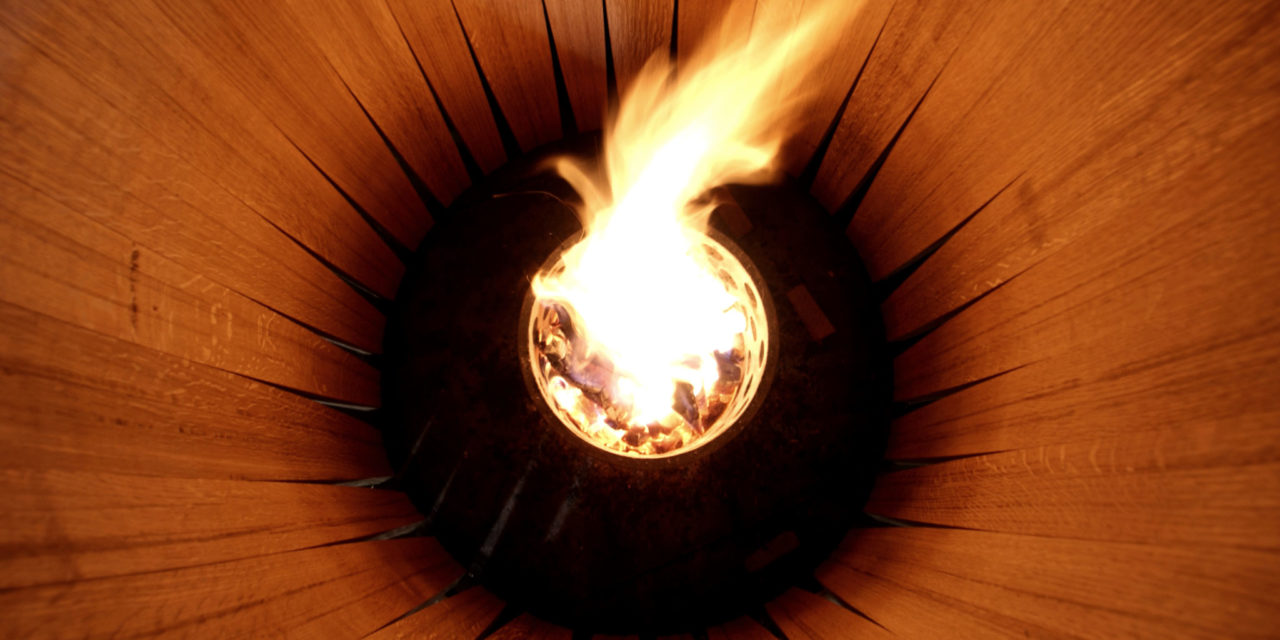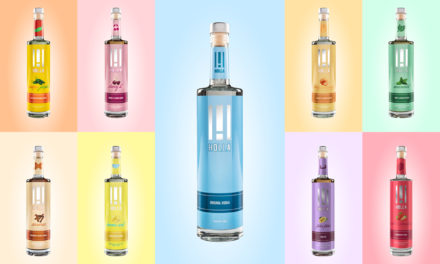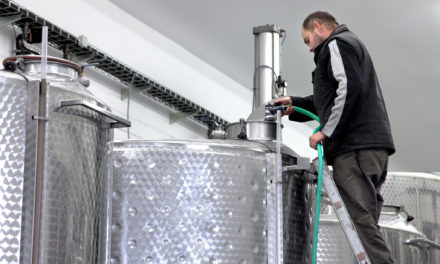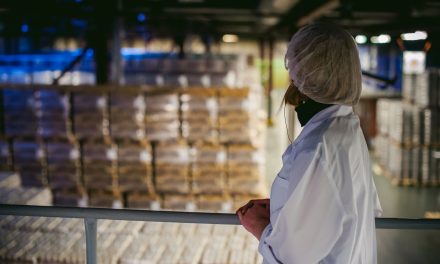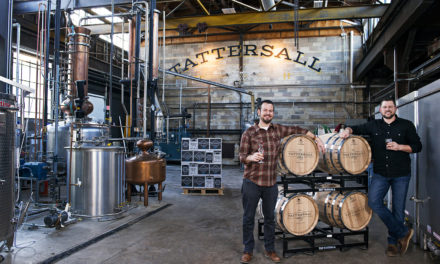All beverage producers who pursue barrel aging—brewers, distillers, wine and cider makers—use personalized criteria to select a perfect vessel. There’s no right or wrong formula, and the only certainty is that the type of barrel chosen for aging has a colossal impact on the final product, secondary only to fruit, grain, or other source materials. A barrel, to a maker, is akin to a chef’s spice rack. It reflects their style and purpose.
Oak type and characteristics
Having a comprehensive idea of your brand philosophy and the flavors you want to promote helps match vessels to vision. There’s a lot to consider.

Christopher Hansen, general manager of Seguin Moreau in Napa, Calif.
“An overabundance of detailed specifications, such as wood origin, type of grains—extra-fine, fine, semi-fine, loose grain—varied size, shape of barrels, and toast levels are just a few of the selections available to the producer,” says Christopher Hansen, general manager of Seguin Moreau, a Napa, Calif.-based cooperage with a global presence. “There’s certainly a lot to choose from.”
Historically, lumber choices included acacia, chestnut, redwood, and walnut, among other types of wood. Ultimately, white oak became a near-universal favorite for a host of reasons, but mainly its lack of porosity, which makes the finished product resistant to leaks, and its high-quality tannin content, a crucial flavor component that enables elegant aging through gradual oxygen absorption. Diverse species of oak grown in different terroirs across the globe present unique physiological and chemical profiles.
French and American white oak display different attributes. American oak, despite recent dramatic improvements at the cooperage level, delivers stronger aroma and presence; this assertiveness results in a richer mouthfeel. French oak barrels, which are typically more understated, dominate the fine wine production world, exhibiting exotic, spicy tones and imparting luxurious, silky texture.
Of course, even “French” and “American” are generalizations, as each forest or growing region has its quirks. Much of American white oak is grown in the Eastern United States, but there’s also plentiful and highly coveted Oregon oak, which bears striking similarities to its French relation. Despite the appealing flavor profile, Oregon oak trees have tightly spaced “knots” on their trunks, which means the yield of lumber unusable for barrels is low—most of the tree goes to waste. This significantly adds to the product cost and makes Oregon oak less marketable.
Eastern European oak is also similar in structure to French but has a more modest tannin content.
There are other esoteric options across the globe. Japan, for instance, is one of the scarcer sources of white oak due to its slower growth rate in that region, strict laws, and cost. Buffalo Trace Distillery in Frankfort, Ky., is experimenting with a series of oak barrels sourced from Mongolia.
Drying, char, and toast
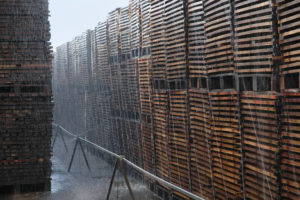
Aging American oak staves [Photo courtesy Seguin Moreau]
Once a tree is processed into staves, seasoning begins with one of two methods to dry the wood. Kilning is fast and cost-effective, but air drying (leaving the wood outdoors and unprotected through several seasons) is the gold standard. Indisputably, aging in the elements neutralizes harsh tannins inside the wood due to wide-ranging effects from weather and microorganism exposure. This results in improved tannin quality and enhanced chemical composition. Typically, this process hovers around the 1.5-year mark, but some coopers (in search of perfection) age for double that time frame—or even more. It’s generally agreed that the lengthier seasoning process dramatically improves barrel characteristics.
Charring or toasting further breaks down wood’s molecular structure. And though they’re similar in process, the resulting changes to the stave wood are remarkably different. Charring exposes staves to an intense heat for a short (though varying) period of time, which “opens” the wood and makes it easier for the aging liquid to absorb its flavors. Longer char results in savory essences, while lighter char produces sweeter flavors. Most spirits barrels are typically made from American oak that’s kiln-dried and flash-fired, a rough process that results in heavy char.
Wine barrel toasting is much more restrained. The slower and gentler process produces more gradual and substantial blaze penetration. Like charring, varied toast levels create diverse flavors. Light toast delivers lighter scents of caramel, clove and vanilla. Medium toast makes for a darker barrel with aromas of cedar, coffee bean, vanilla, and roasted nuts. Heavy toast is the most pungent, with aromas of baking spices, candied ginger, charcoal, and espresso.
Cross aging and hybridization
Historically, winemakers have led the charge in investigating—and investing in—barrel modernization. Daniel Daou, proprietor of Daou Vineyards in Paso Robles, Calif., and a trailblazer in the cabernet sauvignon scene, has taken his barrel program to a new level by seasoning rare (and very expensive) wood he discovered as a result of multiple trips to France: “After years of extensive barrel research, we decided to create a barrel that’s ideally suited for Daou mountain wines. We craft barrels from rare pink French oak called bois rose that’s aged for five years in the elements.”
Vintners and winemakers are no longer alone in the search for innovation. Today, some craft distillers are aging various spirits, such as gin, mezcal, rum, and whiskey, in used wine barrels, which can result in a more complex, nuanced, flavor-forward spirit. The goal of this “cask finishing” technique is for the distillate to absorb the characteristics of the essences present in a barrel after it’s emptied of its original contents.
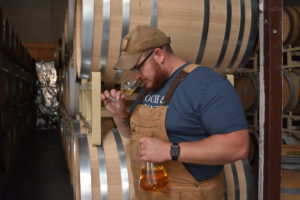
California-based Loch & Union distillery is successfully aging barley-based gin in used chardonnay barrels.
One such maker is California-based Loch & Union Distilling, which is successfully aging barley-based gin in used chardonnay barrels. Chief Distiller Gian Nelson calls it a “project of passion. It’s our most category-bending product—a cross between gin and whiskey—that’s evolving into a striking, sip-worthy spirit.”
Some winemakers are going so far as to customize barrel plans to each vintage, a time-consuming and costly practice that underscores their purity of intent. Recent trends sweeping the industry are focused on elegance, transparency, and letting the fruit and terroir shine. As a result, some coopers have developed programs that zero in on those objectives by pulling from several resources.
In response to makers looking for barrels that incorporate all the desired essentials, select coopers have begun to experiment with various woods within a single barrel. Vincent Nadalié, President at Nadalié USA, explains, “Our hybrid barrel has an American oak body with French oak heads, or vice versa; a French oak body with Hungarian heads; or a 50/50 blend of American and French oak. Further customization options are toasted heads, 36-month open air-dried staves, choice of forest, and grain tightness. We have an advantage over many cooperages in that we own oak stave mills in France and the United States. We produce barrels ourselves, which gives us greater flexibility.”
Growing demand for oak
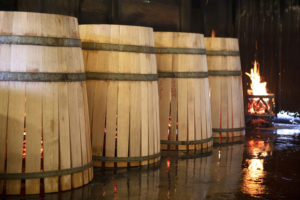
“Our hybrid barrel has an American oak body with French oak heads, or vice versa; a French oak body with Hungarian heads; or a 50/50 blend of American and French oak.” —Vincent Nadalié, Nadalié USA
Oak is a global commodity and a continually renewable resource. That doesn’t necessarily correlate to meeting the demand for final products. Conversations abound concerning continuous protection of oak as a resource, as well as its availability in a processed form. White oak, in general, is already highly coveted across the globe for both barrels and other products, such as furniture and flooring.
The ideal age for an oak tree to be harvested is around 80 to 100 years, which could, curiously, make American lumber a front-runner in the years to come. Historically, U.S. oak forests were over-culled almost to the point of extinction, but government conservation efforts in the 1930s and 40s drastically restricted permitted logging. The forests have had time to recover, and current estimates for U.S. white oak trees are more than 2 billion and climbing.
In addition to the sector growth, demand is fueled by the increased quality of American barrel production. The reputation for American barrels is getting exponentially better, partly due to new technologies and scientific research (though most initiatives still originate in France.)
Barrel making remains steeped in tradition and highly skilled craftsmanship. Collaboration between the cooper and the maker is vital. Sharing information, knowledge, and experience makes the right barrel selection a meaningful and fulfilling process.

